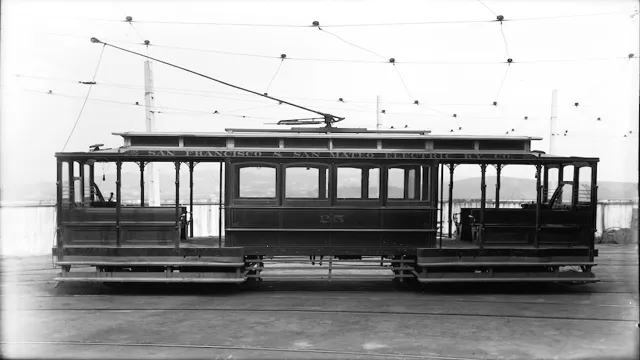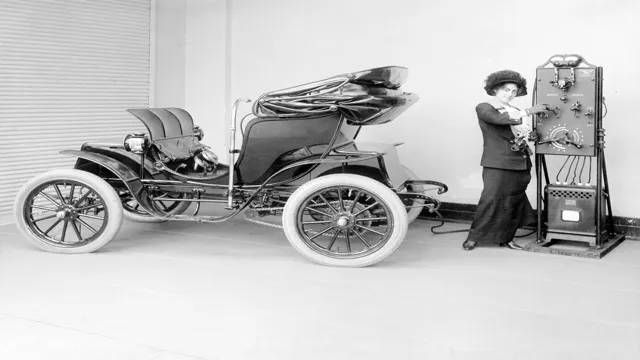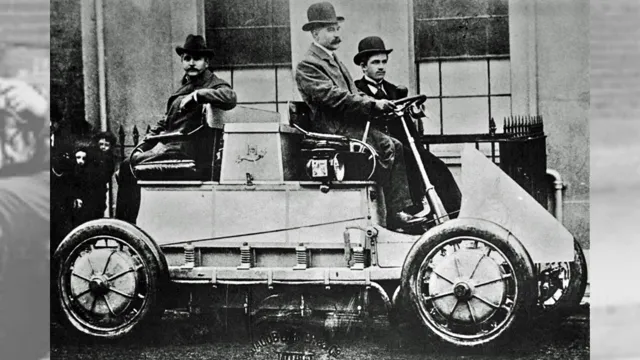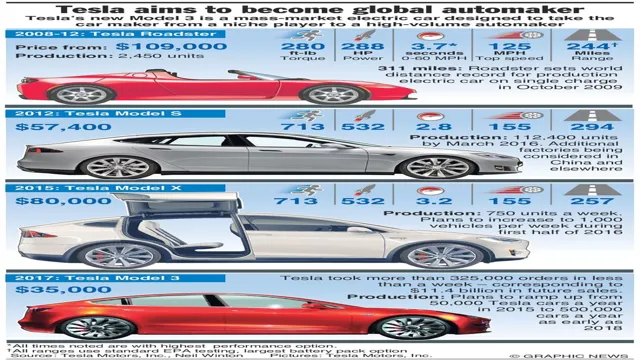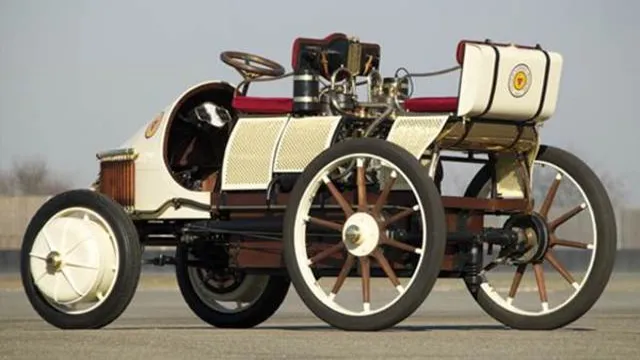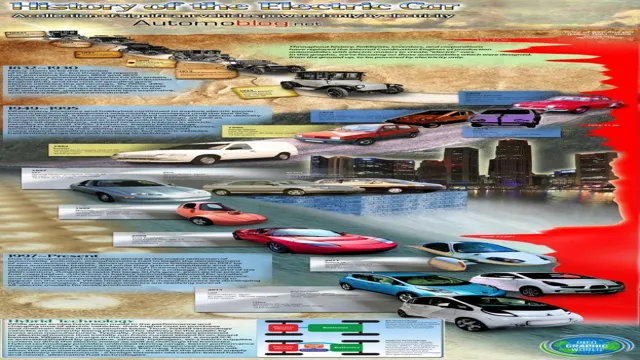The Electrifying Evolution: A Comprehensive Look at the History of Electric Cars
Electric cars have become a ubiquitous part of modern-day transportation, with sleek designs and futuristic technology. These vehicles have come a long way since their inception, and the history behind them is both fascinating and informative. From early prototypes dating back to the 19th century to modern-day mass production, the evolution of electric cars is a testament to human ingenuity and innovation.
In this blog, we’ll take a look back at the historical timeline of electric cars and explore how they’ve transformed over the years. So buckle up and let’s take a ride down memory lane!
Early Years of Electric Cars
The early years of electric cars were heavily influenced by limited range capabilities. In the late 19th and early 20th centuries, electric cars were popular for short commutes and city driving, but they struggled to travel long distances like their gas-powered counterparts. The Baker Electric, produced from 1899 to 1916, was a popular electric car due to its comfortable ride and ease of use.
However, it only had a range of around 50 miles before needing to be recharged, making it difficult for long-distance driving. The 1914 Detroit Electric Model 47 had an improved range of 80-100 miles, but it was still significantly less than what was needed for mass adoption. As battery technology improved and more charging stations became available, range anxiety became less of an issue.
Today, modern electric cars can travel over 300 miles on a single charge, making them a practical option for everyday driving. The history of the range of electric cars highlights the importance of innovation and improving technology to overcome initial limitations.
Late 1800s to Early 1900s Development
During the late 1800s and early 1900s, electric cars were making their first appearance on the roadways. These early models were quite different from the sleek, modern electric cars of today. In fact, they were often bulkier, slower, and less reliable.
Despite these challenges, electric cars were favored by some drivers who appreciated their quiet, emission-free performance. One of the first electric cars was created by a British inventor named Thomas Parker in 188 Parker’s design was followed by a number of other notable early models, including the Columbia Electric Carriage, which was introduced in the United States in 189
While these early vehicles had limited range and were expensive to produce, they set the stage for further advancements in electric vehicle technology over the coming decades.
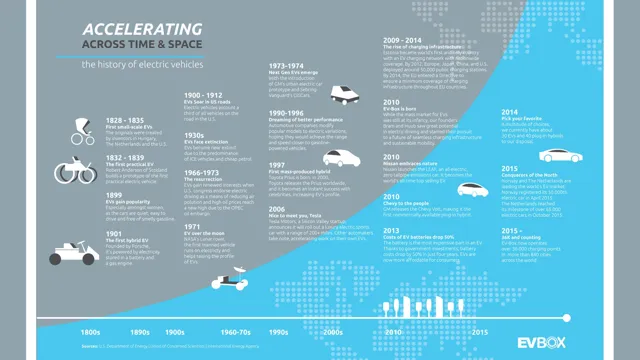
Popular Models and Challenges Faced
During the early years of electric cars, models like the General Motors EV1 and the Toyota RAV4 EV gained popularity amongst electric vehicle enthusiasts. However, these models faced numerous challenges, such as limited driving range and lack of charging infrastructure. In addition, the high cost of production made them less accessible to the general public.
This resulted in many electric car manufacturers shutting down their operations or shifting their focus to hybrid or fuel-efficient vehicles. Despite these setbacks, the early years of electric cars paved the way for advancements in battery technology and the eventual resurgence of electric cars in the 2010s. Today, models like the Tesla Model S and the Nissan Leaf offer longer driving ranges and more affordable prices, making electric cars a viable option for many consumers.
Decline of Electric Cars
The range of electric cars has been a major factor in the fluctuation of electric car popularity over the years. In the early 90s, electric cars were highly sought after due to their low emissions and low maintenance costs. However, these early electric models were notorious for their limited range, with most only being able to travel around 50-100 miles on a single charge.
This made them impractical for long-distance travel and inconvenient for daily use. As a result, the popularity of electric cars declined in the early 2000s. In recent years, with advancements in battery technology, new electric models such as the Tesla Model S and Nissan Leaf are capable of traveling over 200 miles on a single charge, making them much more practical for everyday use and rekindling public interest in electric cars.
While the range of electric cars has come a long way since the early days, further advancements will be needed to fully replace gas-powered vehicles and make electric cars a viable option for all consumers.
Rise of Gasoline Cars
The rise of gasoline cars led to the decline of electric cars in the early 20th century. Gasoline cars became more popular due to their affordability and ease of use. They were also more practical, as gasoline was more readily available than electricity.
In contrast, electric cars were expensive and needed to be recharged often, which was inconvenient for most people. As a result, gasoline cars quickly became the norm and electric cars were pushed to the background. The decline of electric cars continued until the 1990s when they regained popularity due to environmental concerns and new advancements in battery technology.
Today, electric cars are becoming more and more common as people become more aware of their benefits, such as reduced emissions and lower fuel costs. However, gasoline cars still dominate the market due to their affordability and ease of refueling. Despite this, the future of transportation is looking more electric, and it is only a matter of time before gasoline cars become a thing of the past.
Obstacles for Electric Cars
The decline of electric cars has been a major obstacle for those hoping to see a greener future for transportation. Despite early promises of a shift towards electric vehicles, sales have not met expectations, with a decline in sales for various models over the past few years. There are a number of factors contributing to this downward trend, including a lack of charging infrastructure in many areas, high prices for electric vehicles, and a perceived lack of range.
Additionally, the lower cost of gasoline and diesel vehicles has meant that some customers remain hesitant to make the switch to electric. However, as concerns around climate change continue to grow and government incentives for electric cars become more widespread, there may be hope for a resurgence in interest and sales for these environmentally friendly vehicles. As the technology advances, prices may also come down, increasing accessibility for a wider range of customers.
Ultimately, the decline of electric cars is a reminder of the challenges that come with transitioning to more sustainable models of transportation, and the need for continued innovation and investment in these technologies.
Modern Resurgence of Electric Cars
The modern resurgence of electric cars is a fascinating chapter in the automotive industry. Many people are curious about the history of these vehicles and how they have evolved over time. The range of electric cars has definitely come a long way since the early days of the electric vehicle.
In the 1830s, electric vehicles were developed as alternatives to steam-powered vehicles. However, they were quickly overshadowed by gasoline-powered vehicles, which offered greater range and easier refueling. Fast-forward to the 1990s, when electric cars began to resurface with the EV1 from General Motors and the Toyota Prius, which popularized the hybrid electric vehicle.
Today, the range of electric cars has expanded greatly, with many models offering over 200 miles on a single charge. Additionally, there are a growing number of charging stations available, making it easier for EV owners to travel longer distances. It’s an exciting time for electric cars, and with advancements in battery technology and charging infrastructure, the range of electric vehicles will likely continue to expand in the years to come.
Emergence of Hybrid Cars
The emergence of hybrid cars has been a result of the modern resurgence of electric cars in recent years. With the increasing concern over climate change and the need to reduce emissions, people are turning to electric and hybrid vehicles as a viable solution. Hybrid cars use both combustion engines and electric motors, with the electric motor providing power for low-speed driving and the combustion engine taking over for higher speeds.
This combination not only reduces emissions but also improves fuel efficiency, making hybrid cars an attractive option for those who want to save money on gas. One of the major benefits of hybrid cars is their ability to switch back and forth between gasoline power and electric power. When driving in the city or in heavy traffic, the electric motor takes over, reducing emissions and saving on gas.
However, when driving on the highway or at higher speeds, the combustion engine kicks in, providing the power needed to maintain speed and travel long distances. This flexibility is especially useful for those who need a car for both urban and rural driving. As the technology behind electric and hybrid vehicles continues to improve, the number of options available to consumers is increasing.
Some of the most popular hybrid cars on the market today include the Toyota Prius, Honda Insight, and Ford Fusion Hybrid. These vehicles not only offer great fuel efficiency, but also provide a comfortable ride and plenty of amenities. In conclusion, the modern resurgence of electric cars has led to the development of hybrid cars, which offer a practical solution for reducing emissions and saving money on gas.
With advancements in technology and a growing demand for sustainable transportation, hybrid cars are likely to become even more popular in the years to come. So, if you’re in the market for a new car and want to do your part for the environment, be sure to consider a hybrid.
Contemporary Electric Car Models
Electric cars are making a comeback in the automotive industry with a resurgence of contemporary models. With increasing concern for the environment and the need for sustainable transportation, more and more car manufacturers are producing electric vehicles. These cars are powered by rechargeable batteries instead of burning fossil fuels, making them not only eco-friendly but also cost-efficient in the long run.
Some popular contemporary electric car models include Tesla Model S, Nissan Leaf, Chevrolet Bolt, and BMW i These vehicles vary in features such as range, speed, and luxury, catering to various needs and preferences. As technology advances, electric cars are expected to become even more popular in the coming years, changing the face of the automobile industry.
Future of Electric Cars
The range of electric cars has come a long way since their inception in the early 19th century. Initially, electric cars had a very limited range due to the inefficiency of batteries and the high cost of manufacturing them. However, with advancements in technology and the increasing demand for eco-friendly vehicles, the range of electric cars has improved significantly.
Nowadays, they can travel hundreds of miles on a single charge, offering a viable alternative to gas-powered vehicles. New electric cars such as the Tesla Model S and Model X can go up to 402 and 371 miles, respectively, without needing to be charged again. Moreover, the trend of electric vehicles is expected to continue to grow, with more automakers now investing in advanced battery technology to improve the range of electric cars and extend driving time.
In conclusion, the history of electric car ranges has seen many remarkable improvements, and the future of electric cars looks brighter than ever, offering a more sustainable and clean mode of transportation that is environmentally friendly and cost-effective.
Advancements in Battery Technology
The future of electric cars is looking bright with the advancements in battery technology. With the increased demand for electric vehicles, researchers and manufacturers are working to improve the efficiency, capacity, and charging times of batteries. One promising development is solid-state batteries, which can provide longer ranges and faster charging times than traditional lithium-ion batteries.
Additionally, researchers are experimenting with new materials for battery electrodes to increase energy density and reduce weight. Improved battery technology will not only benefit electric cars but also enable the widespread use of renewable energy sources like solar and wind power. The transition to electric vehicles will likely take some time, but the advancements in battery technology will make it more convenient and accessible for consumers in the coming years.
Potential Impact and Growth
The future of electric cars is bright as advancements in technology and a push towards sustainability continue to drive their development. With the growing concerns over air pollution and the rising cost of fossil fuels, it’s no wonder more people are considering electric vehicles as a viable option for transportation. The potential impact of widespread adoption of electric cars is enormous.
It would significantly reduce emissions, improve air quality, and decrease our dependence on finite fuel resources. Additionally, electric cars offer a quieter and smoother ride, making them more comfortable and enjoyable to drive. As manufacturers continue to improve their designs, the cost of electric cars is also becoming more affordable, which will further increase their popularity.
In the coming years, we can expect to see an explosive growth in the electric car market, as governments and individuals alike recognize the many benefits they offer. The future of transportation is electric, and it’s exciting to think about all the amazing possibilities it will bring.
Conclusion
As we come to the end of our journey through the range of electric cars history, it’s clear that this innovative technology is not just a passing trend, but a key player in the future of transportation. From the humble beginnings of the 19th century to the sleek and advanced models of today, electric cars have proven themselves as a sustainable and efficient alternative to traditional gas-guzzlers. While there may be challenges to overcome, such as charging infrastructure and affordability, the potential benefits are undeniable.
With the continued development of electric cars, we can look forward to a greener, cleaner, and more electrifying future.”
FAQs
When was the first electric car invented?
The first electric car was invented in 1837.
What is the range of an early electric car?
Early electric cars had a range of about 50 to 100 miles on a single charge.
When did electric cars become popular?
Electric cars became popular in the late 19th and early 20th centuries, particularly in urban areas.
What is the range of modern electric cars?
Modern electric cars can have a range anywhere from 100 to over 300 miles on a single charge, depending on the make and model.
How have advancements in battery technology affected the range of electric cars?
Advancements in battery technology have greatly improved the range of electric cars, with some newer models able to travel over 400 miles on a single charge.


